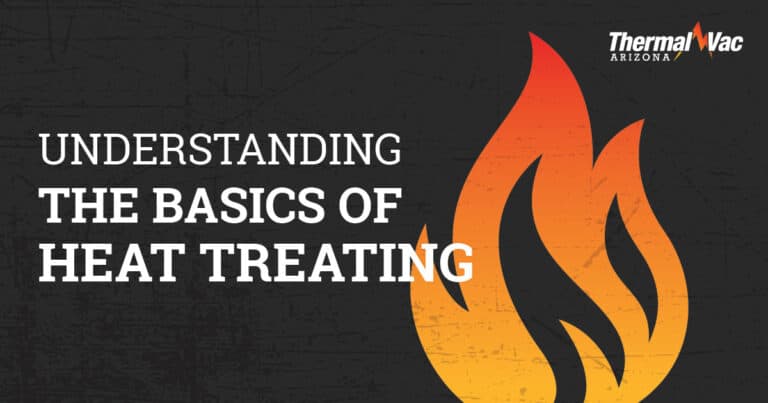Heat treating is both dead simple and devilishly complicated.
Heat a part way up, or cool it way down, and its properties change. The first humans to toss bits of tin into a fire figured that out. With the right temperatures and time, the changes in a part can be good—even magical.
For a modern metallurgist, heat treatment isn’t so simple. The process is a key step in the component fabrication process chain for everything from folding chairs to a fighter jet’s folding wings. Engineering for purpose requires transforming a material to achieve precise characteristics, such as a certain hardness or softness, at each step. To achieve precision results, the heat treating operator has a suite of tools to choose from.
What is heat treating?
As the name implies, heat treating is a process of controlled application of heating and cooling a material to achieve a desired outcome. But heat treating isn’t just about popping parts into an oven (even if that’s what it might look like to those peeking through the shop windows). Careful calculation of time and temperature is essential. So are the conditions within the oven itself: ordinary air delivers one result, specialized gasses or a vacuum can produce different results entirely.
To understand why heat treating can get complicated, you’ll need to look closely at the materials within a part. At the microscopic level, materials have a specific structure consisting of grains of molecules organized into a microstructure. The shape and composition of such structures determines many important characteristics of the material.
Thanks to centuries of trial and error, not to mention the explorations of materials scientists, metallurgists can know a great deal about the microstructure of a particular material without needing to break out an electron microscope. Being so smart allows them to predict how the microstructure of any given metal or metallic material will change under controlled conditions.
As always, the devil’s in the details. A material’s microstructure can have a huge spectrum of possible configurations, each with distinct characteristics. The elements within a material can behave differently under high temperature or pressure, for example by attaching to free molecules from the air. A heat treatment process needs to account for these behaviors to ensure the final part is purpose ready.
The goals of heat treating
Heat treating can come into play at several stages in the production of a final product. For example, untreated components may have characteristics that make them ideal for working in a machine shop, but before they undergo a step like coating or brazing, they might need hardening through heat treatment.
These are some of the ways engineers use heat treating during the fabrication process:
- Hardening the material to make it more resistant to predictable sources of damage like scratching or dents, or to deliver a desired plasticity.
- Relieving stresses introduced along the production path.
- Eliminating microscopic cracks in the microstructure.
While some heat treatment techniques affect an entire part, others can target just one area. The process of case hardening uses heat treating to diffuse carbon into a surface to harden the topmost layer, allowing the base material underneath to retain its characteristics.
Heat treating in Arizona
Legacy Brazing is excited to expand northern Arizona’s local heat treat capacity for businesses nearby and throughout the southwest.
While we gear up, we’re focused on supporting customers with full fabrication process management and engineering support. What projects do you want to get done today? Give us a call at (714) 997-2601 to talk shop.

